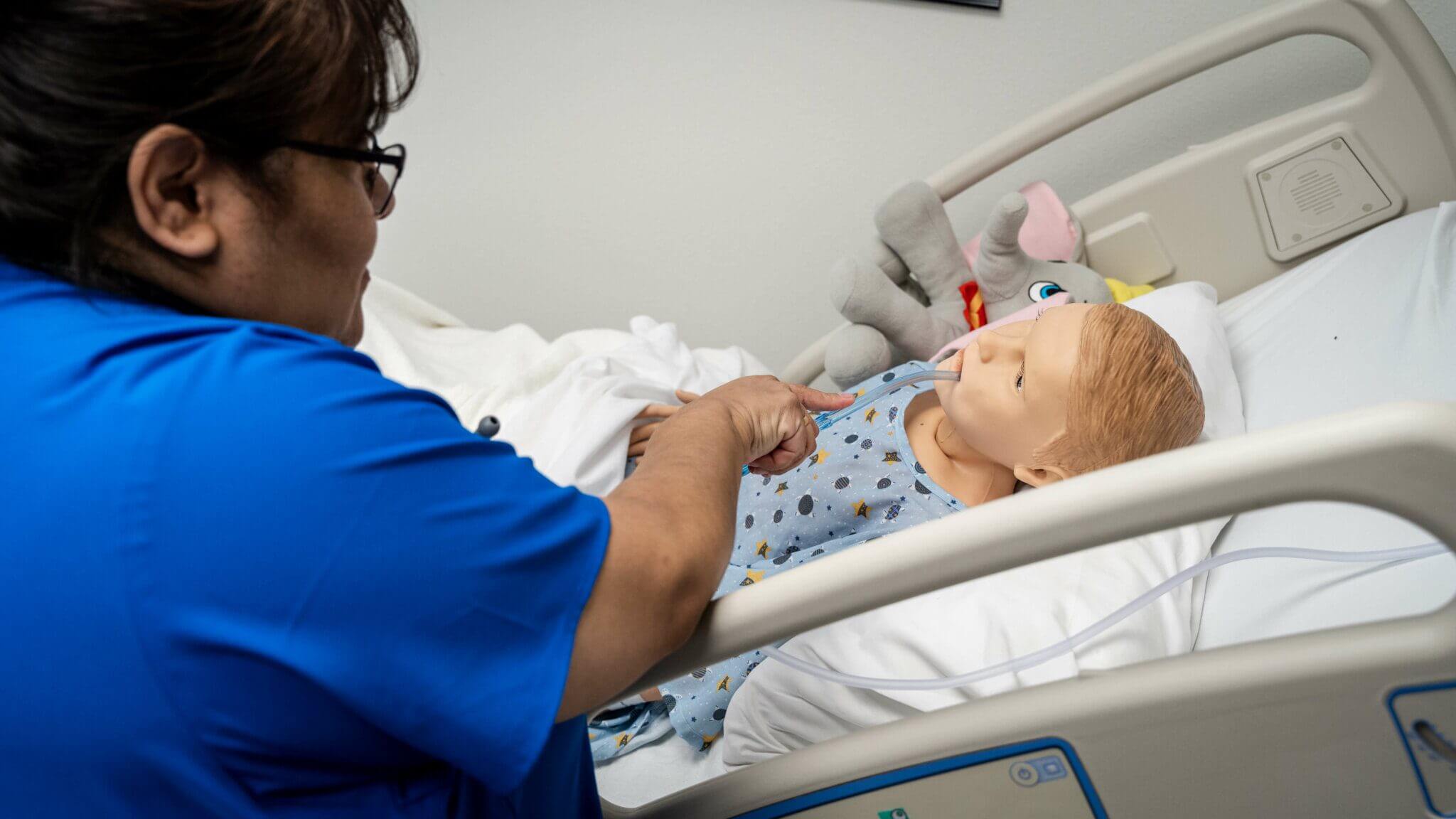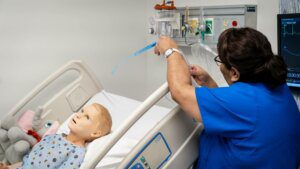Become a Nurse–The State of Nursing Demand
Date: December 1, 2022
Recently, a report on television highlighted nursing shortages in California. The news segment featured two state representatives backing a new bill to accelerate Registered Nursing (RN) programs.
State of the Florence Nightingale Profession
In real-time, the shortages are far from what the ‘doctor ordered.’ By 2030, seven states are expected to have registered nursing (RNs) shortfalls.1 While California is projected to have the most significant nursing shortage by 2030, with a deficit of 44,500 RNs.1 Currently, more than half of current working RNs are over the age of 50.1
While outlying markers indicate the severe need, anecdotal stories support shortage narratives. For instance, in 2019, US nursing schools turned away 80,407 qualified applicants due to a lack of faculty, education space, and resources.1 One might say the “first order” is to determine causes for the shortfalls, then strategically address these deficits.
According to NurseJournal, primary factors contributing to professional shortages include
- Lack of trained nurse educators and faculty;1
- Rising demand to provide care for an aging population;
- An older nursing workforce approaching retirement;
- High turnover rates.1
Reasons for the Shortage
a) Shortages of Trained Nurse Educators and Faculty
By and large, the challenges within health shortages start at the gate. Overall, gaining entrance into an academic program is a complex and lengthy process. Moreover, there is a low acceptance rate generally because classes tend to be small, with many prospective students championing getting in. Because of the high numbers and few available positions, some schools offer a lottery system for acceptance. Thereby, many would-be students often go through the frustration of registering more than once. All the while, critical shortages expand.
In short, the time for training and equipping nurse educators is now.
b) Rising Demand to Care for an Aging Population
But lack of proper training isn’t squarely the cause of the shortage. The rising demand for care for an aging population is also a significant contributor. “By 2030, every Baby Boomer will be 65 or older, which means that one out of every five US citizens will be of retirement age.”2 Older Americans generally require extra healthcare services and more critical wellness management. As a result of these realities, there will be far more demand than supply, taxing the future healthcare system.2

c) Older Nursing Workforce Approaching Retirement
A third contributor to nursing shortages is that many current professionals are aging out of the workforce. “Unprecedented stress brought on by the COVID-19 pandemic has prompted many nurses to leave the profession early and retire from their current positions,”3 says in a recent blog. “This is on top of those already close to retirement age. Most nurses have decided to retire early due to physical and emotional demands.”3
d) High Turnover Rate
Moreover, according to a recent survey by The National Library of Medicine, “the current national average for turnover is 8.8 to 37 percent, depending on one’s geographic location and nursing specialty.4 Burnout seems to be a key reason cited for high turnovers. Other factors leading to shorter tenures seem to be nurse-patient ratios, lack of appreciation toward nurse professionals, inequality in staffing ratios, and even negative behavior from patients.
Now that many nurses have walked, the respect for the profession seems to be accelerating. With precious supplies gone, the title of nurse seems ever more respected.
RX: A Silver Lining
While there’s little we might do to combat the rising demand of an elderly population or nurses aging out of the system, these realities may inadvertently also be areas of opportunity. So much so that many economists predict these supply shortfalls with heightened demand will likely see positive linings for future nurses. Some expected opportunities predicted include:
a) Employers Will Likely Try Harder To Keep Staff
Employers will probably use incentives to attract nurses to enter or advance in this workforce. Such attempts will likely resemble flex schedules,5 partial retentions, possibly wage adjustments, and financial assistance. Additionally, experts predict better efforts for company CEO’s to address nursing burnout.
b) Companies Will Likely Use Attractive Recruitment Tactics
New nurses will likely see employers compete. These may translate as expanding referral bonuses and increasing internal nurse float pools while investing in talent. All of which value the profession more.6 Newer nurses may see perks such as financial assistance for childcare,5 or travel options from one venue to another.
 Altruistic As Always
Altruistic As Always
Whatever their pay grade or whoever their employer is, new nurses may rest assured they join a helping profession. Notably, they will have opportunities to provide care for America’s aging and vulnerable population. Countless others before and after them will be satisfied knowing they entered a profession where they make a difference.
Beat the Shortage!
One straightforward way to combat the nursing shortage is to become a nurse! RN programs vary in length, and there are many ways to become a nurse. From two- and three-year associate degree programs to four-year baccalaureate and LVN programs.
Beat the shortage. Check out Gurnick Academy’s nursing program offerings today.~
Citations:
1^a, b, c, d, e, f Hamlin, Kristen. “Why Is There a Nursing Shortage?|NurseJournal.org.” NurseJournal, NurseJournal.org. A Red Ventures Company. Aug. 29, 2022. (Accessed Nov.18, 2022).*
2^a, b Meola, Andrew. “The Aging US Population Is Creating Many Problems—Especially Regarding Elderly Healthcare Issues.” Insider Intelligence, Insider Intelligence Inc. April 15, 2022. (Accessed Nov. 21, 2022).
3^a, b Solodev. “Why Tenured Nurses Are Leaving the Nursing Profession.” Avanthealthcare.com, Avant Healthcare Professionals. Sept. 30, 2022. (Accessed Nov. 29, 2022).
4 Haddad, Lisa M., et al. “Nursing Shortage.” PubMed, StatPearls Publishing. Feb. 2, 2020. (Accessed Nov. 30, 2022).
5^a, b Bebinger, Martha. “Many Mass. Hospitals Are Short-Staffed. The Culprit May Not Be a Shortage of Nurses.” Www.wbur.org, WBUR. Feb. 28, 2022. (Accessed Nov. 19, 2022).
6 Jean, Joelle. “6 Proven Strategies from Nurse Execs to Combat the Nursing Shortage in 2022.” NurseJournal, NurseJournal.org, a Red Ventures Company. Jan. 11, 2022. (Accessed Nov. 19, 2022).
*Source within the source: The 2020 National Nursing Workforce Survey|Supply and Demand Projections of the Nursing Workforce: 2014-2030|AACN.







